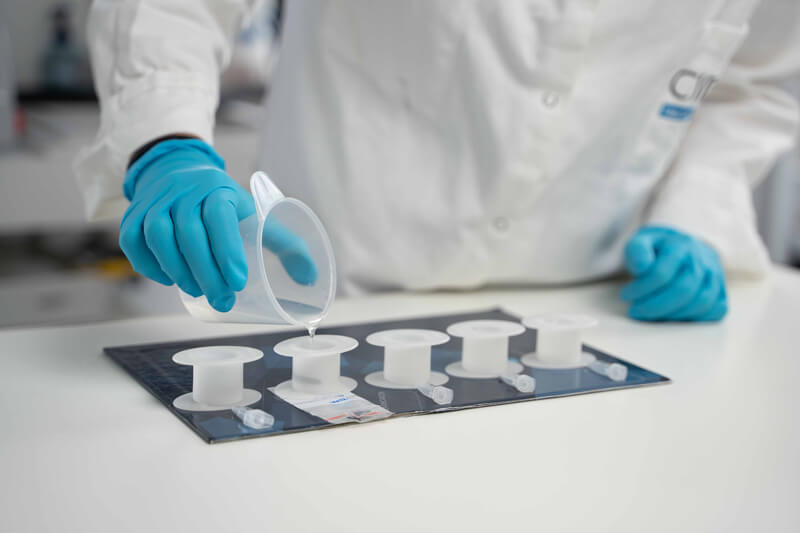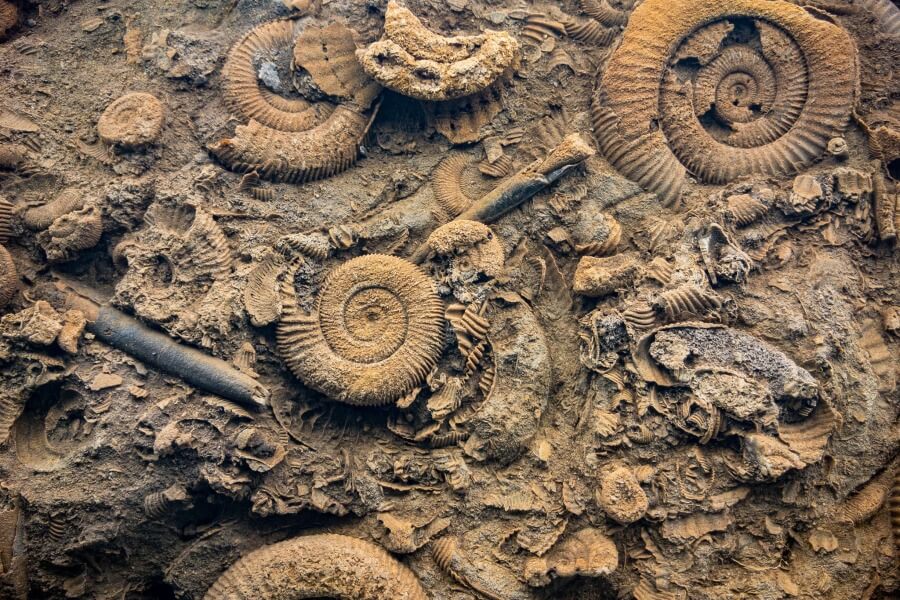
STUDY OF ORGANIC RESIDUES
Thanks to the coupling of cutting-edge technologies, infrared spectrometry, Raman spectrometry, chromatography, and know-how in carpology and palynology, our scientists will detect and identify the organic remains found in ancient amphorae or in ancient pottery. The techniques developed by CIRAM allow the characterization of oils, fermented beverages, resins, fats, perfumes…
Coupling, the analytical solution
Organic residues unearthed in archaeological contexts are most often natural materials. That is, they are composed of many molecules that a single technique will not be able to identify. Therefore, coupling analytical methods, such as infrared spectrometry and gas chromatography, will be the most relevant vector for accurate and reliable characterization.
ORGANIC RESIDUES AS WITNESSES OF PAST LIFE
Organic residues found in bottles, vases or flasks constitute clues about food customs, ancient cooking methods for example. But they can also provide information on commercial exchanges from Antiquity or the Middle Ages, as well as on ancestral funerary practices.
The CIRAM laboratories have an analytical network that will cover a wide spectrum of investigations, starting with the identification of the major families of products (oil, fat, resin…), up to the discovery of ancient cooking recipes.

Infrared spectrometry - FTIR
Fourier transform infrared spectroscopy, in ATR mode or microscopy, is a method that our teams of scientists use in the laboratory, in order to identify the major families of organic compounds. For example, we will be able to characterize the presence of oil, animal fat or natural resin for example.
The mineral material will however be able to bring a spurious signal, preventing the identification of the organic compounds present. This is why infrared spectrometry will be used in the approach stage. CIRAM teams will generally couple FTIR spectrometry with other analytical techniques, such as chromatography or Raman spectrometry for example.
GC-MS chromatography
Gas chromatography (GC) or liquid chromatography (LC) is the technique dedicated to the study of organic compounds. CIRAM teams typically couple chromatography with mass spectrometry. Chromatography will separate the compounds of a sample, and mass spectrometry, will identify the compounds according to their mass.
From the GC-MS analysis, CIRAM’s doctors and engineers will characterize all the molecules present in a mixture or an archaeological organic residue. It is the nature of these molecules associated with their concentration that will make it possible to trace the material used, olive oil, walnut brou, animal fat, tannin…
Raman spectrometry
Although it is more dedicated to the study of mineral matter, Raman spectrometry is nonetheless an interesting method in archaeometry, as it is non-invasive and does not require any pre-treatment of samples.
Researchers at CIRAM will be able to use Raman spectrometry alone, or in coupling with FTIR spectrometry or GC-MS chromatography. Indeed, the residues found in ancient pottery are so complex, that it is usually necessary to use different complementary analytical techniques.
Carpology and Palynology
Carpology is the study of seed and fruit remains found in ancient containers or archaeological sediments. Analysis of these plant residues provides information about human activities and ancestral lifestyles. Even charred, CIRAM scientists are able to identify the nature of these seeds, and thus understand their use and reconstruct environments.
Palynology is the study of pollens and spores released by plant species. When coupled with carpology and anthracology, these techniques will allow the reconstruction of environments and climates. The observations made by our teams of scientists in optical microscopy or electron microscopy will allow us to determine the dimensions and shapes of the pollen or spore grains, the number and shape of the apertures, the ornamentation, the structure of the wall… and thus to define the family, the genus and in the best case the plant species.
CIRAM specialist in archaeomaterials analysis
To meet your analytical needs and archaeological issues, CIRAM laboratories offer an extensive panel of scientific investigations for the characterization of mineral, metallic and organic materials. In the laboratory or in the field, we adapt to your requests.
Discover CIRAM’s other fields of expertise:
